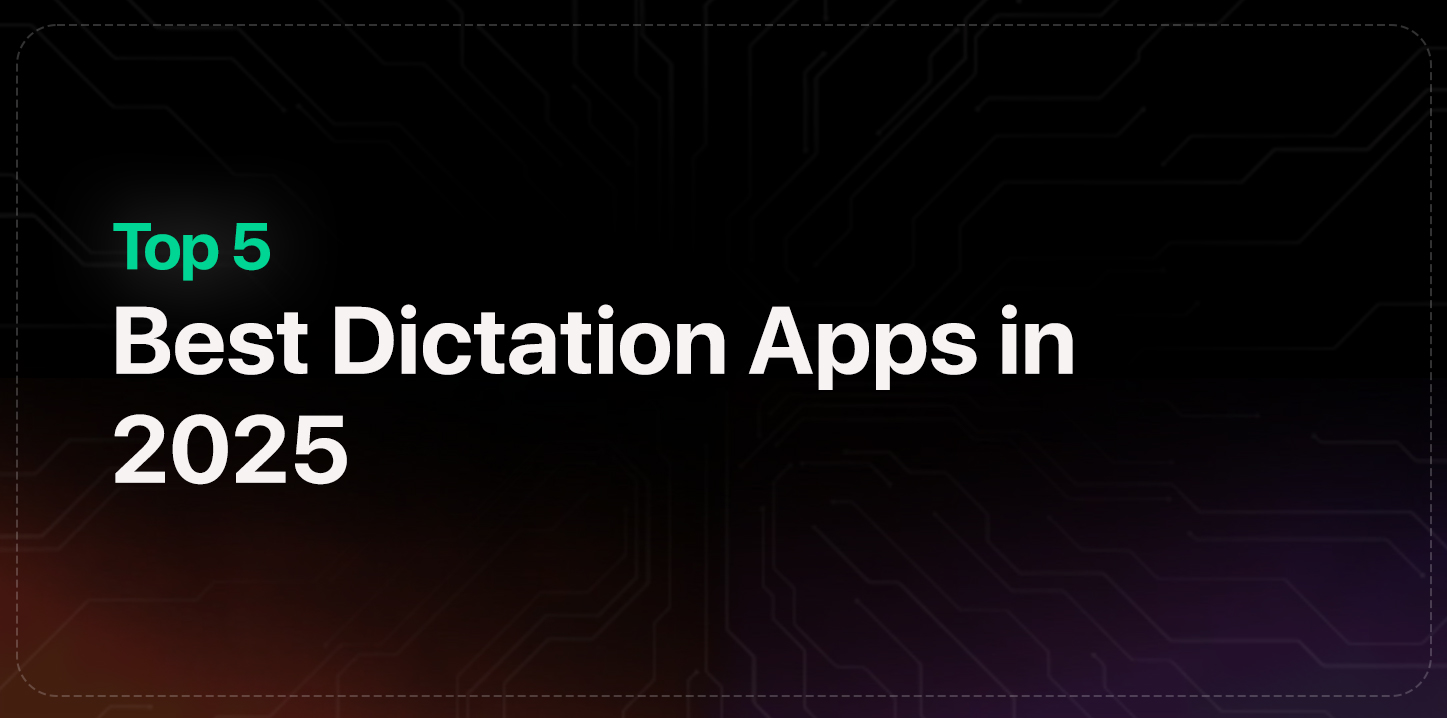
In 2025, dictation technology has shifted from being a niche accessibility feature to a mainstream productivity powerhouse. According to a 2024 Statista report, the global speech recognition market surpassed $30.2 billion and is projected to grow at a CAGR of 18.3% through 2030, fueled by improvements in real-time AI models and on-device processing powered by Apple Silicon.
Consider this real-world perspective from a developer on Reddit’s r/Frontend:
“Talking is just fundamentally faster than typing… it feels so much more natural… I’ve found it to be about 100% faster than typing and, more importantly, it keeps me in a deep flow state.”
Why You Need Dictation Tools in 2025
Why now? Modern dictation tools deliver near-instant voice-to-text accuracy with contextual understanding, handling punctuation, formatting, and even coding syntax. Unlike early solutions that stumbled over accents or required constant corrections, today's AI-driven systems adapt dynamically to user speech patterns and specialized vocabularies.
A Core Productivity Tool
Historically, dictation was positioned as a feature to assist users with physical limitations or accessibility needs. Today, it has evolved into a powerful tool for professionals across industries. Writers can brainstorm and draft entire articles hands-free. Developers can capture coding ideas or quick snippets without switching context from their primary environment. Business professionals use it for rapid email responses, meeting notes, and collaborative content creation, all without disrupting their workflow.
Ideal Scenarios for Modern Dictation Tools
-
Content Creation: Writers, bloggers, and journalists use AI-powered dictation to draft long-form content quickly. The ability to dictate directly into editors like Pages, Google Docs, or Markdown-based tools eliminates friction in the creative process.
-
Hands-Free Coding & Notes: Developers benefit from dictation when capturing technical thoughts, documenting code logic, or making quick notes during debugging sessions. The reduction in context switching improves overall flow and efficiency.
-
On-the-Go Productivity: Mobile dictation enables users to compose messages, update project notes, and capture creative ideas while commuting or during fieldwork.
Dictation vs. Transcription
-
Dictation provides live, real-time text creation. As you speak, words appear instantly in the application, making it ideal for drafting emails, notes, or full documents on the fly.
-
Transcription, on the other hand, processes pre-recorded audio or video and converts it into text after the fact. This is often used for meeting recordings, podcast scripts, or lecture notes where the content is already captured.
What to Expect from a Modern Dictation Tool
Modern dictation tools have evolved into far more than simple speech-to-text engines. They’re now intelligent assistants that combine accuracy, adaptability, and integration in ways that make them central to everyday workflows. To see what this looks like in practice, let’s break down the core capabilities you should expect.
1. AI-Driven Accuracy with Generative Models
The most apparent step to advance is precision. In contrast, modern tools do not use older rule-based transcription like their predecessors, instead being based on generative AI models that can accommodate accents, intonations, and be used to accommodate other jargon. This implies that a physician who dictates notes about a patient, or a developer who comments code aloud, can be sure that the correct words will be transcribed properly the first time. Partiality here does not only imply fewer typos, but it is the ability to minimize the cognitive montage of correcting your text after having spoken.
The distinguishing feature of such tools is that they learn corrections over time. By correcting a misheard word every time you do, the AI becomes more alert and will be ready to correct it next time. After some time, the dictation process gets personalized; it is as though the software has calibrated itself to your tone.
2. Real-Time Formatting and Commands
The possibility of voice-controlled formatting is another game changer. You do not only dictate content, you dictate structure. The utterance of such commands as new paragraph, add a comma, insert a bullet list immediately transforms the result. This is somewhere between the raw transcription and the text that you can publish.
In systems where speed is critical, such as live blogging a live event, or taking quick notes in a meeting the feature has the advantage that the resulting document should require little to no cleanup. In reality it is as though you were issuing directions to a secretary that not only knows what to say but the manner in which it should be said.
3. Offline vs. Cloud Modes: Privacy or Power
The dictation tools are also flexible with regard to their processing of audio. Offline mode operates on your system and never sends files out, so of essence in healthcare, legal, and finance, where loss of privacy is never an option.
Cloud-based modes, on the other hand, bring richer enhancements: advanced speaker diarization, automated summaries, and adaptive vocabularies that evolve with your work. Choosing between the two isn’t about which is “better,” but which aligns with your context. The best tools let you switch seamlessly, giving you control over when you prioritize privacy and when you need AI horsepower.
4. Seamless Integration with Everyday Apps
Perhaps the most underrated strength of modern dictation is how deeply it integrates with the apps you already use. You can dictate a polished email in Gmail, switch to drafting a quick Instagram caption, and then jump into WhatsApp to send a personal message, all without typing a word.
This fluidity removes the old copy-paste bottleneck. Instead of treating dictation as a separate step, it becomes a natural layer across your communication and productivity stack. Over time, this saves countless micro-interruptions and makes voice input feel like a native part of the operating system.
5. Custom Voice Commands and MCP Integrations
Finally, power users benefit from the ability to create custom voice commands. Through integrations with frameworks like MCP, you can build shortcuts tailored to your workflow, launching apps, triggering macros, or even automating recurring tasks with a simple spoken phrase.
Think of it as merging dictation with automation. Instead of just transcribing, your tool becomes an orchestrator: “Send weekly report” could compile documents, format them, and attach them to an email draft. This transforms dictation from passive transcription into active workflow automation.
And this brings us to the underlying architectural question many teams face: should transcription happen locally, or in the cloud?
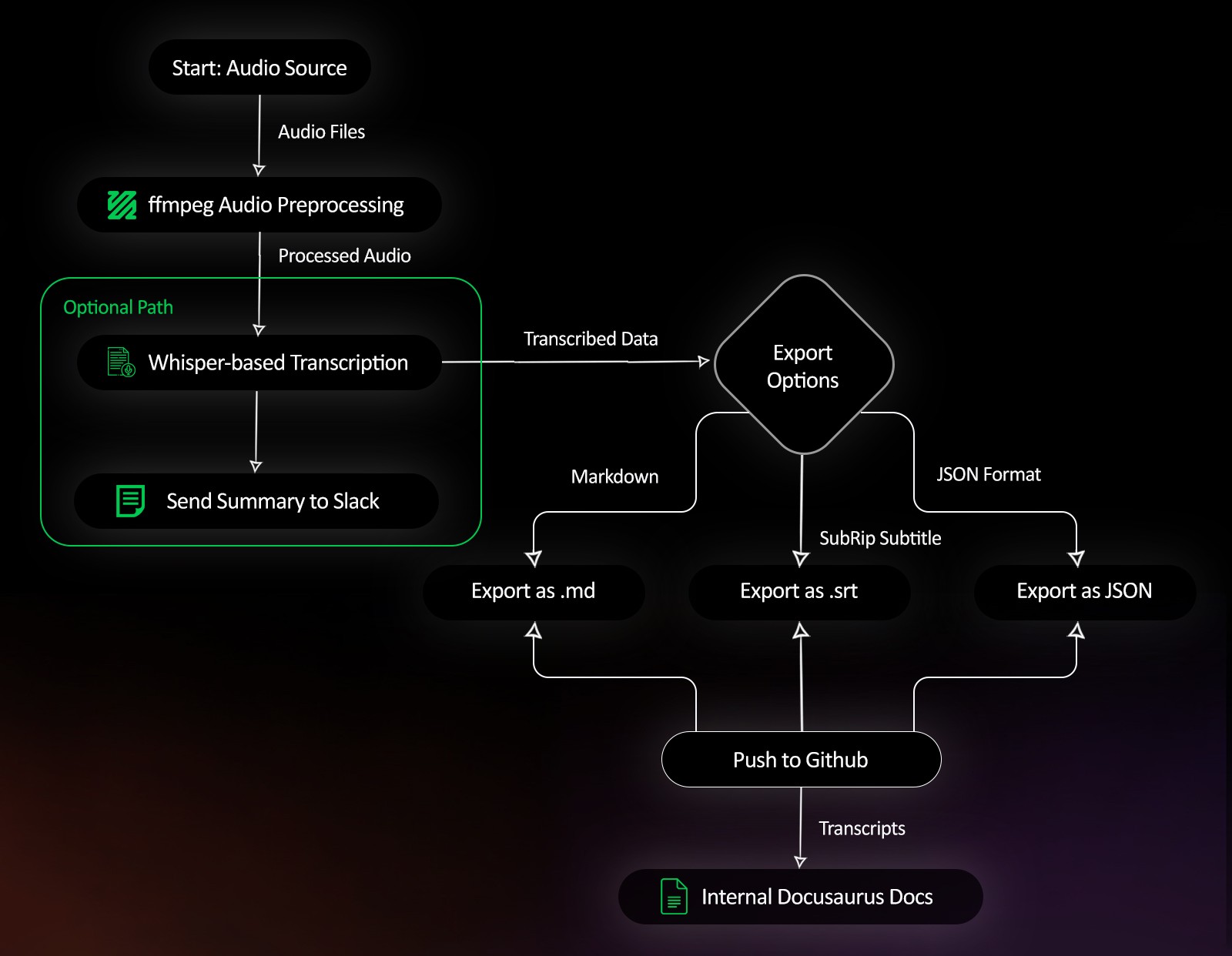
Dictation Software Landscape: Local vs Cloud vs Hybrid
Dictation tools can be broadly divided into three categories, local AI, cloud AI, and hybrid models. Each approach comes with trade-offs in terms of privacy, speed, team collaboration, and AI sophistication. To make this clearer, here’s a comparison table of three widely discussed tools in 2025: Amical, SuperWhisper, and Wispr Flow.
Comparison Table of Local AI vs Cloud AI
| Feature | Amical (Local AI, Open-Source) | SuperWhisper (Local AI) | Wispr Flow (Cloud AI) |
|---|---|---|---|
| Open source | Yes – fully open-source, extensible for developers | No | No |
| Local AI | Yes – runs on-device, ensures privacy and low latency | Yes – offline-first, private dictation | No – relies on cloud servers |
| Desktop apps | Yes – native desktop apps on macOS and Windows | Yes – lightweight desktop app | Yes – polished desktop client |
| Team features | No – single-user focused for now (team features soon) | No – individual productivity only | Yes – team collaboration, shared contexts |
| Model type | Local AI | Local AI | Cloud AI |
Local AI Tools
Local-first dictation software prioritizes privacy and responsiveness, since processing happens directly on your device rather than the cloud. This eliminates dependency on internet connectivity and ensures sensitive content stays local.
-
Amical → Best for users who require privacy and speed, with the added flexibility of open-source customization. Developers and power users benefit from the ability to extend workflows using its modular architecture.
-
SuperWhisper → Designed for privacy-first users who want reliable offline transcription without needing internet access, though it lacks extensibility and collaborative features.
Cloud AI Tools
Cloud-based dictation software brings the advantage of continuous AI improvements, since models are frequently updated server-side. These tools often include filler cleanup, tone adjustment, and polished formatting that’s ready to publish.
- Wispr Flow → Ideal for writers and teams who want shared workspaces, collaborative dictation sessions, and automatic text cleanup. However, reliance on cloud infrastructure raises concerns for privacy-sensitive users.
Hybrid Considerations
Hybrid setups, combining local AI for privacy and speed with cloud AI for enhancements, are still emerging. In practice, most users today balance by using a local-first tool (like Amical or SuperWhisper) for sensitive work and a cloud tool (like Wispr Flow) for collaborative or client-facing content.
5 Best Dictation Tools (2025 Edition)
While there are dozens of transcription tools floating around, only a handful truly serve professional workflows, offering accuracy, export control, and reliable performance. Based on our evaluation rubric, these five tools stand out in 2025, each catering to different user personas, from solo developers and indie podcasters to product teams and enterprise research orgs.
1. Amical
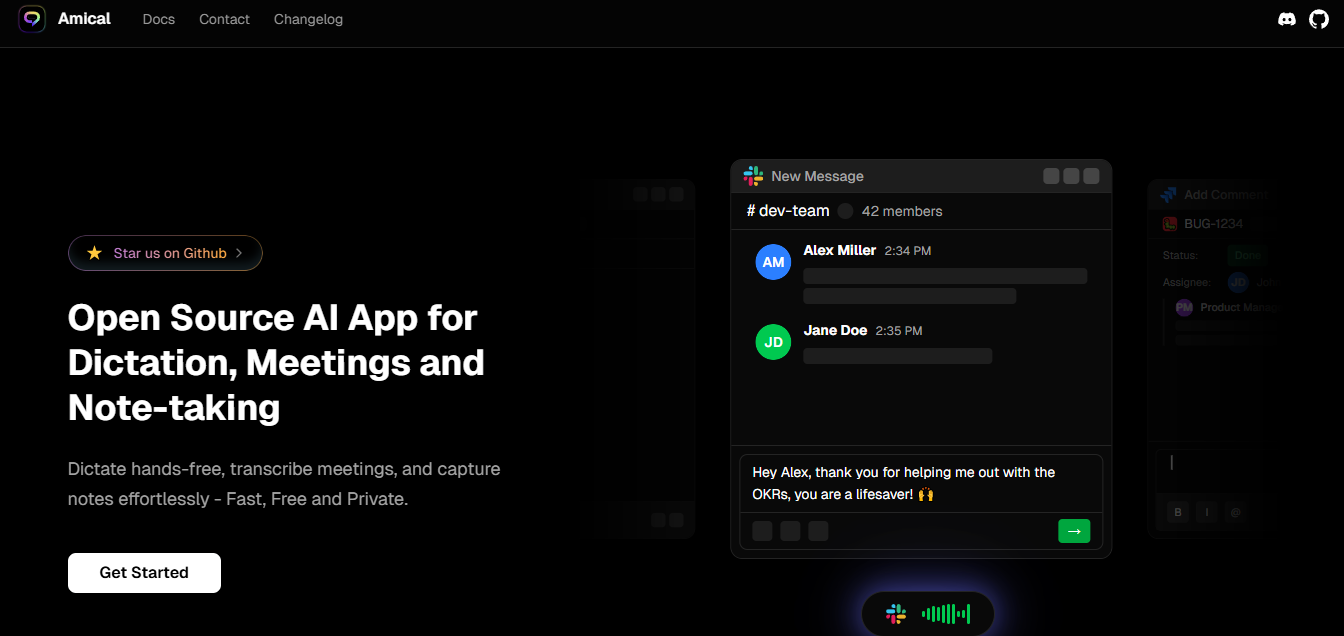
Amical leads this list because it rethinks dictation as infrastructure rather than a utility. Built on an open-source, local-first foundation, it processes speech entirely offline, with the option to extend into the cloud for richer AI enhancements when needed.
What makes Amical shine is its context-aware formatting. Dictating an email in Gmail? The output reads professionally, with correct paragraphing and punctuation. Drafting an Instagram caption? The tone automatically adjusts to something lighter and more casual. It feels less like a generic speech-to-text tool and more like a smart assistant that adapts to your environment.
For power users, Amical offers CLI hooks, automation via Shortcuts, and customizable hotkeys, alongside a floating widget for quick dictation without leaving your active app. This makes it equally appealing for engineers feeding structured transcripts into GitHub, as well as marketers switching between Slack, Notion, and email.

This user praise underscores the app's technical clarity and contextual finesse, all running offline.
Multi-language support already works reliably, and the roadmap includes cloud sync and team-ready features, making Amical a strong long-term bet. The only caveat is its smaller user base, which means fewer community resources compared to giants like Apple or Otter. But for developers, privacy-conscious professionals, and teams building custom workflows, Amical feels like the future of dictation.
2. Wispr Flow
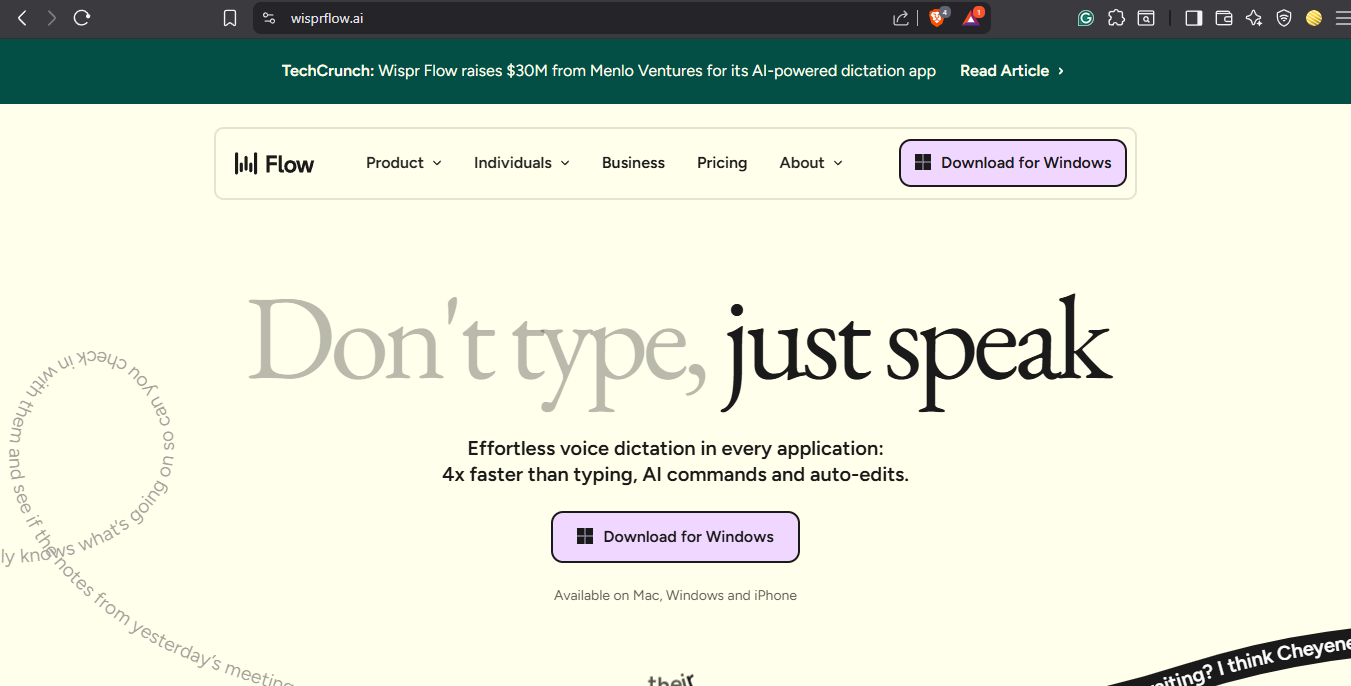
If Amical is about infrastructure, Wispr Flow is about polish. A fully cloud-based dictation platform, it supports over 100 languages and specializes in turning raw speech into publication-ready text.
Wispr Flow doesn’t just transcribe, it cleans and styles as it goes. Filler words disappear, grammar gets auto-corrected, and the tone can shift based on context. With a quick Fn hotkey, it works anywhere, whether you’re drafting blog posts in Notion, firing off emails in Outlook, or refining copy in Google Docs.
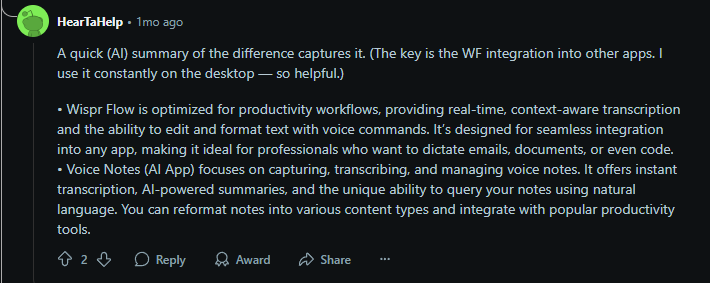
There’s also concern for resource use:
The app is a whopping 800 MB… constantly using about 8% CPU, even when idle. - reddit
Its biggest strength is speed and convenience. Teams love it because they don’t need to spend hours cleaning up dictation. Wispr Flow produces something that’s often ready to ship. Editorial workflows, content marketers, and writers will find it especially useful.
The tradeoff, of course, is privacy. Since all processing runs through Wispr’s servers, sensitive users (legal, medical, or R&D professionals) may hesitate. But for those prioritizing efficiency over local control, Wispr Flow remains one of the slickest dictation apps in 2025.
3. SuperWhisper
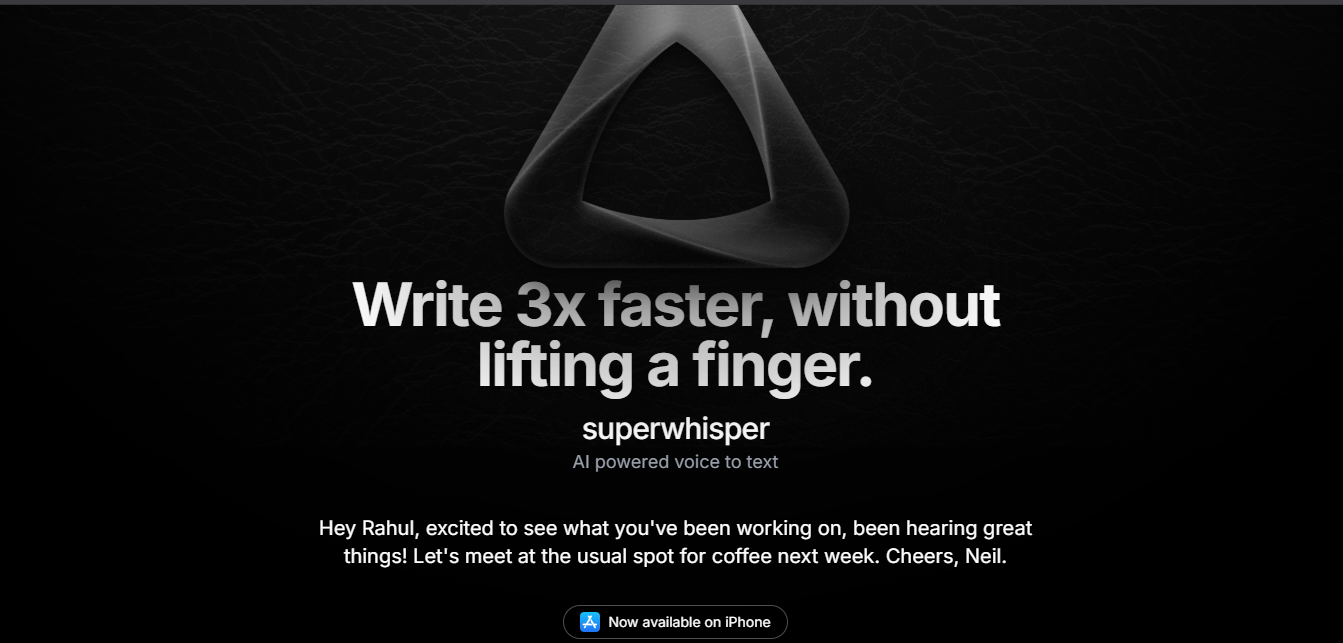
SuperWhisper is the privacy-first powerhouse in this lineup. Built on Whisper.cpp, it runs entirely offline on Apple Silicon, meaning nothing ever leaves your Mac. This makes it ideal for industries where data security is paramount, researchers, journalists, lawyers, and developers working in air-gapped environments.
The app nails the fundamentals of dictation. It offers AI-powered punctuation and formatting, highly accurate transcription across languages, and quick menu-bar access with customizable shortcuts for instant recording. On newer Macs, performance is fast and smooth, rivaling even cloud tools in many cases. They now have support for iphones too.

Another Redditor adds:
“Pricing wise BetterDictation ($19 lifetime) is a better deal, but SuperWhisper ($99 lifetime) has literal punctuations feature that BetterDictation doesn’t…” - reddit
But the strength of privacy and control comes with limitations. SuperWhisper doesn’t have Wispr Flow’s polish; there’s no built-in filler removal, tone adjustment, or collaboration layer. Export options are also more basic, with a focus on text rather than styled outputs.
For users who value local-first reliability over fancy extras, however, SuperWhisper is unbeatable. It’s the kind of app you can trust for confidential notes, internal research, or private dictation without worrying about data leaks.
4. Apple Dictation
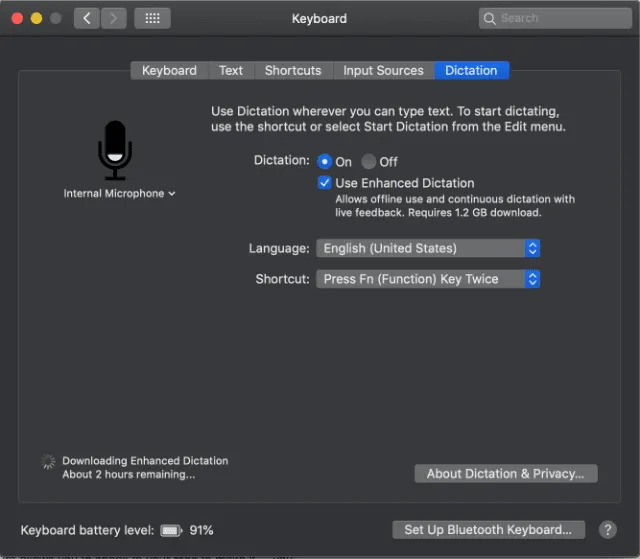
Apple’s built-in Dictation remains the default entry point for macOS users, and for good reason. It’s free, system-wide, and instantly available without needing third-party installs. With Enhanced Dictation enabled, it even runs offline, offering basic privacy-friendly functionality.
That said, Apple Dictation feels like the baseline option in 2025. While it handles everyday voice typing fine, its punctuation and formatting commands are limited, and it lacks context-aware output, integrations, or multi-language finesse. In fast-paced workflows, it often feels clunky compared to the smarter tools in this list.
It’s ideal for quick notes or simple voice typing, but lacks the sophistication needed for professional workflows.
Reddit Insight:

Still, it serves a purpose: for casual users or those new to dictation, Apple Dictation is an easy starting point. It’s perfect for quick notes, reminders, or short messages, but professionals relying on dictation daily will quickly run up against its limitations.
5. BetterDictation
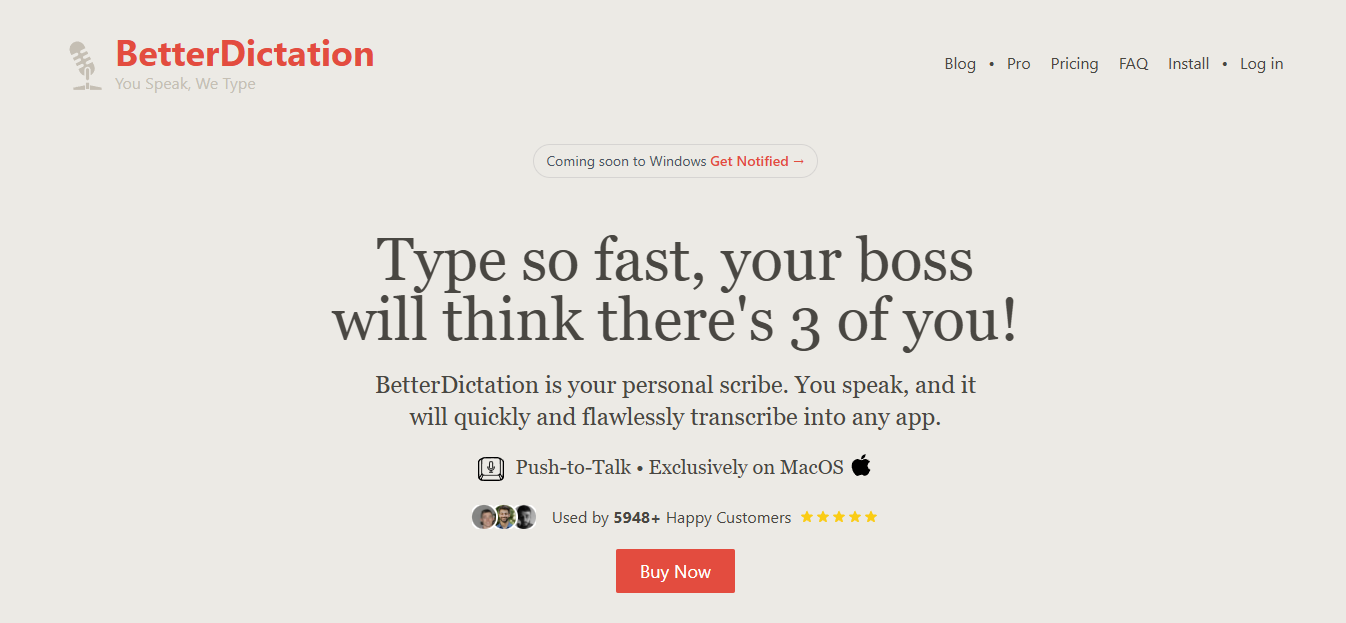
BetterDictation sits somewhere between Apple Dictation and premium AI-driven tools. It’s a one-time purchase app, making it appealing to those who dislike subscriptions. By default, it offers offline dictation with solid accuracy, focusing on privacy and simplicity.
Where it stands out is the Pro tier, which introduces AI grammar correction and style cleanup. This makes it more versatile than Apple Dictation, giving users outputs that are closer to Wispr Flow’s polish without requiring cloud processing for everything.
Its interface is minimalist and distraction-free, and it avoids the bloat of bigger platforms. However, it doesn’t offer the developer-grade automation of Amical or the team features of Wispr Flow, which may limit its role in complex workflows.
For users who want affordable, privacy-oriented dictation with occasional AI enhancements, and who don’t want to depend on Apple or recurring SaaS fees, BetterDictation is a solid middle ground.
Best Practices for Using Dictation Tools
1. Create the Right Environment
Even with noise-robust AI models, your recording environment can significantly impact transcription quality. Background hums from AC units, typing sounds, or keyboard clicks may still introduce minor artifacts. Users should invest in a USB or XLR microphone with built-in noise cancellation or Mac owners can leverage the M2/M3 chip's Neural Engine for live filtering via apps like SuperWhisper.
Instead of enunciating every word unnaturally, speak at a natural pace with light pauses for punctuation. Modern transcription AI has been trained on diverse datasets (including conversational speech) and often performs better with fluid speech than forced clarity. Test with small samples to calibrate your tone and pace before full-length sessions.
2. Use Smart Workflows
Dictation becomes more powerful when integrated directly into daily workflows. Set up global hotkeys or voice triggers (e.g., pressing Option + D or saying “Start dictation”) to launch tools instantly.
For cross-app usage, some tools allow direct dictation into Gmail, Slack, Notion, or WhatsApp without copy-pasting. If the tool supports MCP (Model Context Protocol) or Zapier-like automations, create chained workflows:
-
Dictate → AI Summarize → Push to Notion or Confluence
-
Dictate → Generate Meeting Notes → Share to Slack Channel
In this thread from r/Frontend, a developer shares their experience with voice dictation tools for coding. They mention that speaking is fundamentally faster than typing, allowing for a more natural flow in coding. They also discuss the importance of using tools with near-instantaneous response times for effective voice coding.
3. Balance Privacy and Collaboration
Not all dictation tasks require the same security posture. For sensitive use cases, legal drafts, medical notes, or confidential research, offline-capable tools like Amical or SuperWhisper are ideal. They process audio locally using macOS Neural Engine without sending data to the cloud, mitigating exposure risks.
For team-based projects, however, collaboration is key. Cloud-enabled tools like Wispr Flow support shared contexts, team editing, and filler-word cleanup in real time, making them ideal for remote brainstorming or multi-user documentation sessions.
Switching between offline and online modes based on context ensures a balance of privacy, accessibility, and performance.
Conclusion
When choosing dictation software, the decision often comes down to privacy, accuracy, and collaboration needs. If you value privacy and offline reliability, local AI tools like Amical and SuperWhisper are strong choices. They process everything on your device, which means your words never leave your system. Amical especially stands out for those who want the balance of open-source transparency and speed.
On the other hand, if your workflow depends on polished, ready-to-publish text and collaboration features, a cloud-based tool like Wispr Flow becomes a better fit. Its ability to clean up filler words and streamline team writing makes it ideal for professional writers or distributed teams.
In short, built-in options like Apple’s or Windows’ default dictation might be fine for casual use, but for serious productivity, AI-driven apps like Amical offer a faster, more accurate, and workflow-friendly upgrade.
FAQs
1. What is the best app to use for dictation?
The “best” depends on your needs. For privacy and offline speed, Amical or SuperWhisper are excellent. For team collaboration and polished transcripts, Wispr Flow is stronger.
2. Is Amical suitable for professional use?
Yes. Amical is designed for professional writers, researchers, and teams who need accuracy, privacy, and extensibility through open-source foundations.
3. Does Wispr Flow support team collaboration?
Yes. Wispr Flow offers collaborative dictation, shared contexts, and team features that make it ideal for co-authoring or editorial workflows.
4. Can SuperWhisper work entirely offline?
Absolutely. SuperWhisper runs locally on your machine, meaning you don’t need an internet connection for transcription. This is especially useful in sensitive environments.
5. Should I replace Apple or Windows dictation with an AI dictation app?
If you use dictation casually, the built-in tools are fine. But for higher accuracy, faster corrections, and workflow integration, replacing them with AI apps like Amical is a worthwhile upgrade.